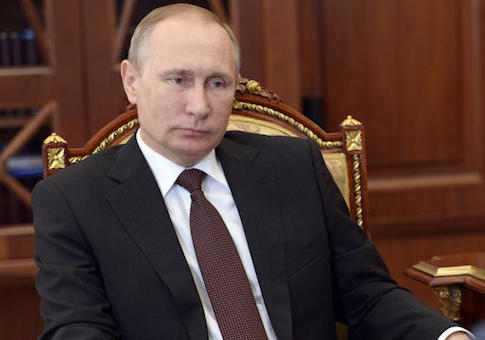Russia is working to deploy a revolutionary hypersonic maneuvering strike missile by 2020, according to a Russian defense industry leader.
Boris Obnosov, director of the state-run Tactical Missiles Corp., told a Russian news agency the new hypersonic missile will be capable of penetrating advanced missile defenses and represents a revolutionary advance in military technology.
"It's obvious that with such speeds—when missiles will be capable of flying through the atmosphere at speeds of seven to 12 times the speed of sound, all [air] defense systems will be weakened considerably," Obnosov told the Rambler News Service this week.
The disclosure comes as Adm. Cecil Haney, commander of the U.S. Strategic Command, warned last month that the threat posed by hypersonic missiles is growing.
"Hyper-glide vehicle research and development are also challenging our planning calculus," Haney told a conference on missile defense in Alabama. "The ability to find, fix, and track and hold … these types of capabilities are becoming increasingly more difficult. Hyper-glide vehicle technology can complicate our sensing and our defensive approaches."
Haney said the military must "think about it and look at it in different ways so that, again, we are maximizing [missile defense] sensing to be able to understand what exactly is it going at so we can then look at how do we take it out."
A Lockheed Martin missile defense expert said last week that the Pentagon is looking at ways to shoot down maneuvering hypersonic missiles. Among the options are an extended-range version of the Terminal High-Altitude Area Defense, called THAAD-ER, and high-powered lasers capable of shooting down missiles before they reach hypersonic speeds of Mach 5 and above.
Obnosov’s comments are among the first public statements about the secret Russian hypersonic missile program. Moscow has kept secret most details on the hypersonic missile program that has been underway for the past several years.
China also is building hypersonic strike vehicles and has conducted seven tests of the DF-ZF high-speed glider. The DF-ZF was tested in April.
The United States is also working on hypersonic missiles and space vehicles. But its programs are said to be smaller and funded at lower levels than those of both Russia and China.
Obnosov said the Tactical Missiles Corp. is responsible for hypersonic missile development, along with a subunit, NPO Mechanical Engineering, and several other defense institutes including Precision Systems and the Moscow Institute of Thermal Technology, a major missile research and development center.
The defense industry official said Russian government funding for hypersonic development is not as high as it should be.
"The development of hypersonic technology can be a catalyst for development of the entire industry, the entire national economy as they used to say," he stated, comparing the development of hypersonics to the launch of the first satellite in 1957. The high-speed vehicles also could have commercial applications.
The first hypersonic missile could be deployed by the early 2020s, with a craft capable of reaching speeds between Mach 6 and Mach 7, or between 4,600 mph and 5,370 mph, Obnosov said.
Such speeds pose technology challenges because of the heat created by high-speed travel through the atmosphere. Controlling hypersonic missiles also is difficult.
Asked if Russia is lagging behind China in developing hypersonic strike vehicles, Obnosov said it is difficult to know because China is keeping details of its hypersonics secret.
Russia is monitoring foreign hypersonic missile developments, he added.
Mark Schneider, a former Pentagon strategic policymaker, said reports from Russia indicate hypersonic missiles will be deployed in multiple basing modes, including surface ships, submarines, and bombers.
"Comparable U.S. programs are being funded at low levels and may never actually be deployed," Schneider said, adding that, unlike Russia’s strategic hypersonic missiles, U.S. counterparts "will certainly not be nuclear capable under current policy."
Russian press reports said the Tactical Missiles Corp. was involved in Soviet-era research on a hypersonic cruise missile with a speed of Mach 5 or higher.
Russia’s Deputy Prime Minister Dmitry Rogozin announced in 2012 that hypersonic weapons were a high priority for the military. "We are going nose to nose with the Americans—we will not be left behind," Rogozin said.
Russia conducted a flight test of its hypersonic missile on April 19. The vehicle was launched atop an SS-19 ballistic missile. It was the second known test of the missile. An earlier test occurred last year.
Russia continues to build strategic ballistic and cruise missile with the goal of penetrating U.S. missile defenses.
However, American officials have said current missile defenses are limited to the 30 Ground-Based Midcourse Defense interceptors deployed at Ft. Greely, Alaska, and Vandenberg Air Force Base, California.
The system includes sensors and fire control elements around the world to counter a limited missile strike from North Korea or, in the future, Iran.
The 30 interceptors are not sufficient to counter large salvos of long-range missiles—either ballistic or maneuvering hypersonic—from Russia or China.
